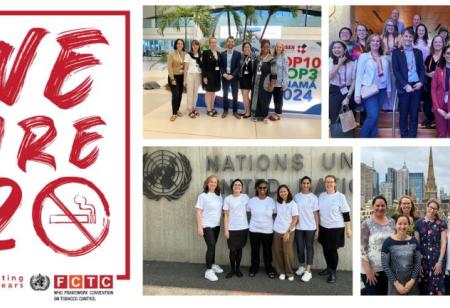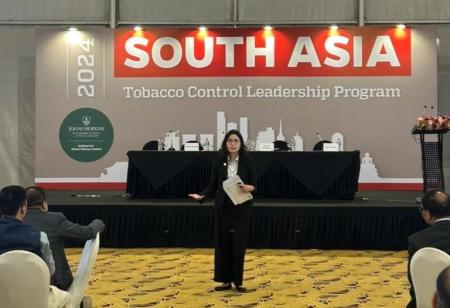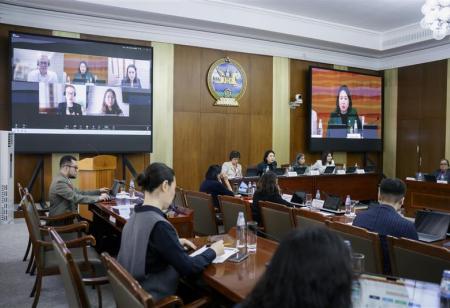
An initial overview of the WTO panel decision in Australia – Plain Packaging - 3 July 2018

On 28 June 2018, the World Trade Organization (WTO) released the panel report on the challenges to Australia’s tobacco plain packaging laws. The panel found in favour of Australia, dismissing the claims brought by Cuba, the Dominican Republic, Honduras, and Indonesia. The decision is the third victory for Australia in defending legal challenges to its plain packaging laws, following the dismissal of a constitutional challenge in the High Court of Australia and an investment treaty challenge under a 1993 Hong Kong – Australia bilateral investment treaty.
This post is an initial overview of the content of the panel report, focusing on those aspects most directly relevant to the upholding of Australia’s laws and on the way in which the WHO Framework Convention on Tobacco Control (WHO FCTC) featured in the decision. For further information, background to the dispute is available here, and discussions of other plain packaging cases are available here. The panel report is long, technically complex and deals with a large volume of evidence, running to almost 900 pages in the decision itself and to more than 1000 pages once annexes are included. We will be publishing a more detailed analysis of the report and its implications at a later date.
However, some key findings and themes that can be drawn from the report at this stage include:
- Plain packaging is an evidence-based measure to address an ‘exceptionally grave’ public health problem
- Plain packaging is no more trade-restrictive than necessary to achieve the legitimate objective of protecting public health, and therefore does not violate the WTO’s Agreement on Technical Barriers to Trade
- Plain packaging does not infringe upon intellectual property protections required under the WTO’s Agreement on Trade-Related Aspects of Intellectual Property Rights
- There are few interests more ‘vital’ and ‘important’ than protecting human beings from health risks
- Evidence relating to tobacco control measures needs be assessed with the understanding that tobacco control measures work as part of a comprehensive suite designed to operate over the long term
- The WHO FCTC strongly supports many of the panel’s findings
The panel’s factual findings
The panel makes a number of factual findings about the purpose and nature of plain packaging laws, and their implementation in Australia, including that:
- the objective of Australia’s plain packaging laws is to improve public health by reducing the use of, and exposure to, tobacco products (7.243)
- the consequences of not achieving this objective would be ‘exceptionally grave’ in light of the serious health consequences of tobacco use and exposure to tobacco smoke (7.2592, 7.1310)
- the health consequences would be ‘especially grave for youth’ (7.1317)
- a key aim of tobacco product promotion is to attract new smokers: ‘new smokers must continuously be recruited to maintain the primary demand for tobacco products at a level that will sustain the industry and “replace” those who cease to use the product because they have quit or died’ (7.744)
- branded packaging plays an important role in promoting tobacco products, particularly to adolescents:
- ‘designers of packaging innovations in the tobacco industry are conscious of the power of branding, including design and other elements of packaging, to elicit certain responses in the minds of consumers and imbue those products with images with which the prospective consumer would want to be associated.’ (7.736)
- ‘the images and messages conveyed by tobacco packaging are of such a nature as to be capable of conveying a belief that tobacco use can fulfil certain needs, or create certain associations with the user. Moreover, as identified above, it is recognized that youth and young adults are particularly vulnerable to the initiation of tobacco use in the event that they believe those needs can be fulfilled through tobacco use’ (7.737).
- there is sufficient evidentiary support for Australia’s plain packaging laws, including both pre-implementation research on its likely impacts and post-implementation evaluation of its actual impacts (7.485-7.1045)
- Plain packaging measures, in combination with other tobacco control measures, ‘are apt to, and do in fact, contribute to Australia’s objective of reducing the use of, and exposure to, tobacco products’ (7.1025, see also 7.2604)
The panel’s legal findings
The two key groups of arguments brought by the complainants were that:
- plain packaging was ‘more trade restrictive than necessary’ to protect public health, under article 2.2 of the Technical Barriers to Trade (TBT) Agreement
- plain packaging violated intellectual property protections required under the Trade-Related Aspects of Intellectual Property Rights (TRIPS) Agreement
The panel dismisses both groups of arguments.
Trade restrictiveness (TBT Agreement)
The panel finds that plain packaging is no more trade-restrictive than necessary under article 2.2 of the TBT Agreement. It finds that:
- the aim of reducing tobacco use and exposure to tobacco smoke falls within the legitimate objective of protecting public health (7.248-7.251)
- plain packaging makes a material contribution to this objective: ‘the evidence before us, taken in its totality, supports the view that the [tobacco plain packaging (TPP)] measures, in combination with other tobacco-control measures maintained by Australia (including the enlarged [graphic health warnings (GHWs)] introduced simultaneously with TPP), are apt to, and do in fact, contribute to Australia’s objective of reducing the use of, and exposure to, tobacco products.’ (7.1025)
- plain packaging is trade-restrictive in that it reduces the total volume of imports by reducing overall use of tobacco products (which in Australia are entirely imported) (7.1208); however, this is to be weighed against the contribution plain packaging makes to public health, and the fact that ‘it is widely recognized, and undisputed in these proceedings, that the public health consequences of the use of, and exposure to, tobacco, including in Australia, are particularly grave’ (7.1310), especially for youth (7.1317)
- there was no less-trade-restrictive alternative that would provide an equivalent level of protection for health given the risks (7.1324-7.1731)
Intellectual property rights (TRIPS Agreement)
The panel rejects a large number of arguments made by the complainants on the effects of tobacco plain packaging on the tobacco industry’s intellectual property. Consistently with the outcomes of other challenges to plain packaging and graphic health warnings, the panel confirms that TRIPS does not provide for a right to use a trademark. Rather it provides for ‘negative rights’, i.e. rights to prevent others from using the trademark, which are not affected by plain packaging.
The core of the panel’s decision on intellectual property focuses on Article 20 of the TRIPS agreement, which provides that the use of trademarks in the course of trade shall not be ‘unjustifiably encumbered by special requirements’.
The panel concludes that plain packaging is not an ‘unjustifiable’ encumbrance by special requirements under article 20 because:
- the ‘special requirements’ imposed by plain packaging are adopted to protect an important societal interest: it was ‘undisputed that the grounds on which the special requirements on the use of trademarks in the course of trade under the TPP measures are applied address an exceptionally grave domestic and global health problem involving a high level of preventable morbidity and mortality’ (7.2592)
- the standardization of tobacco packaging is an important part of achieving this interest: ‘the removal of design features on retail packaging and cigarettes is apt to reduce the appeal of tobacco products and increase the effectiveness of GHWs. It is integral to this approach that the use of certain figurative features and signs, including those that are protectable subject-matter as trademarks, is restricted as part of the overall standardization of retail packaging and the products themselves (cigarettes and cigars). This overall design of the TPP measures, of which the trademark-related requirements are an integral part, provides support for the conclusion that the reasons for their adoption sufficiently supports these requirements, and that they are therefore not applied “unjustifiably”. (7.2593)
- the reasons for plain packaging provide sufficient support for the restrictions they impose: ‘the fact that the special requirements, as part of the overall TPP measures and in combination with other tobacco-control measures maintained by Australia, are capable of contributing, and do in fact contribute, to Australia’s objective of improving public health by reducing the use of, and exposure to, tobacco products, suggests that the reasons for which these special requirements are applied provide sufficient support for the application of the resulting encumbrances on the use of trademarks.’ (7.2604)
Themes in the panel’s decision
Public health in WTO adjudication
The panel reaffirms existing WTO jurisprudence that ‘few interests are more “vital” and “important” than protecting human beings from health risks’ (7.1311 citing EC- Asbestos and Brazil – Retreaded Tyres in the context of its findings on the TBT, see also 7.2587 in the context of its findings on TRIPS).
The panel finds that the 2001 Doha Declaration on TRIPS and Public Health is a subsequent agreement to the TRIPS Agreement under article 31(3)(a) of the Vienna Convention on the Law of Treaties, and that the TRIPS Agreement must therefore be interpreted in light of the Doha Declaration’s recognition that the interpretation of the TRIPS Agreement must give due weight to its object and purposes clauses, which recognise the importance of public health and other societal interests (7.2409). It also affirms more generally that the TRIPS Agreement must be interpreted in light of the recognition in article 8 of TRIPS that members may adopt measures to protect public health (7.2408).
The panel’s approach to the evidence
The panel reviews an extensive amount of evidence. It considers the different components of this evidence with an understanding of the way in which tobacco control measures work:
- the evidence must be assessed in light of the fact that plain packaging is part of a comprehensive suite of tobacco control measures (7.981, 7.1041-7.1043)
- in light of the comprehensive nature of tobacco control measures, the panel recognises that the effects of individual measures may be difficult to isolate (7.980-7.983, 7.1040)
- the evidence must be assessed in light of the fact that tobacco control measures are designed to have an impact over the long term and that their effects may take time to manifest (7.986, 7.1044)
The panel’s approach to the WHO FCTC
The WHO FCTC and its guidelines, and the references to them in the Tobacco Plain Packaging Act and its explanatory memorandum, feature prominently in the decision. The panel refers to the WHO FCTC and its guidelines:
- to confirm that the objective of the plain packaging legislation is to improve public health by reducing the use of, and exposure to, tobacco products (7.243)
- to demonstrate the seriousness of the global tobacco epidemic (7.250) and the importance of taking action to address it (7.2596)
- to support the panel’s finding that the risks of not implementing tobacco control measures are particularly grave in light of the health risks of tobacco use and exposure to tobacco smoke (7.1310, 7.2592)
- to support its findings on the regulatory context of tobacco plain packaging, in particular that plain packaging is implemented as part of a comprehensive, multisectoral, and multifaceted approach, and that therefore different tobacco control measures were complementary elements of this comprehensive approach rather than alternatives to each other (7.1728-7.1730)
- to support its finding that packaging is a form of promotion, as stated in the Article 13 Guidelines (7.664)
- to support its finding that plain packaging, as a measure recommended under the article 11 and 13 guidelines, is an important part of reducing the appeal of tobacco packaging and design and its use in tobacco product promotion, and therefore not an ‘unjustifiable’ encumbrance on the use of trademarks (7.2595)
- to demonstrate that Australia ‘pursued its relevant domestic public health objective in line with the emerging multilateral public health policies in the area of tobacco control’ as reflected by the WHO FCTC and its guidelines (7.2604)
Conclusion
The WTO panel’s decision is a clear rebuttal of the tobacco industry’s arguments that plain packaging breaches the WTO Agreements, a resounding victory for Australia, and yet another example of the baselessness of tobacco industry legal claims and threats. Other countries should find much in the decision to encourage them to move ahead with plain packaging and other strong tobacco control measures.





